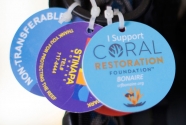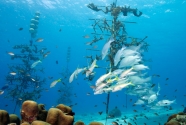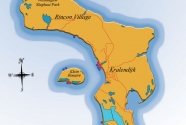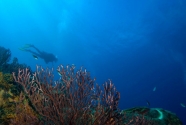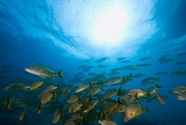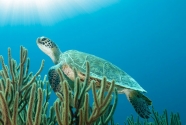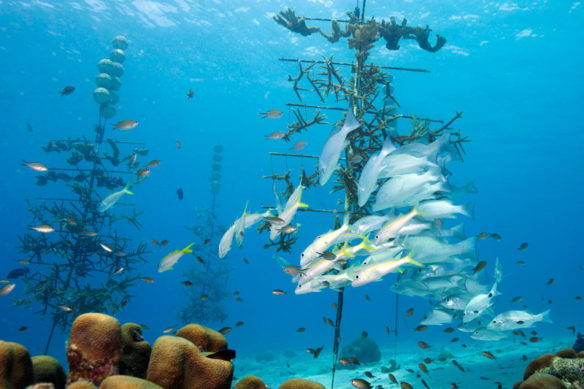
Originally published in Diver Magazine, 2017.
All text and image courtesy of © Andrew Jalbert. All rights reserved.
When avid scuba diver and famed Jurassic Park author Michael Crichton first visited Bonaire decades ago, he eloquently described the underwater environment as, “a world of riotous, outrageous color.” Years later, Bonaire has seen some changes but his assessment still largely rings true. From its protected nearshore reef system and calm seas to its first-rate dive facilities, Bonaire has become one of the world’s premiere destinations for scuba enthusiasts. The combination of seemingly unlimited shore diving options and the island’s dedication to marine preservation provides divers with the freedom to explore a healthy environment at their own pace.
The local government, non-governmental agencies, and private businesses alike have all worked diligently to earn the Divers Paradise slogan Bonaire displays on its automobile license plates. Their economy is largely driven by scuba and other eco-tourism. To that end, protecting the island’s ecology is more than just a noble cause; it’s good business. The reef is Bonaire’s gem⎯one of the main draws to the island, and nearly every resident has a stake in its preservation to some degree. It’s comprised of over fifty species of coral, starting just beyond the shoreline and extending 300 meters offshore.
“What can be done when coral populations are being destroyed by factors beyond the reach of local regulations?The Coral Restoration Foundation Bonaire (CRFB) seems to have an answer for that.”
— Andrew Jalbert
This entire area was designated as the Bonaire National Marine Park in 1979 and has been protected accordingly ever since: Spear fishing is prohibited (with the exception of recent efforts to harvest invasive Lionfish), there is no collecting allowed (of anything, dead or alive including seashells or broken pieces of coral), no use of gloves, and no disturbing the turtles, their nests, or their eggs. Even chemical glow sticks for night diving (commonly used elsewhere) are prohibited. There are other regulations that apply to anchoring, fishing, shoreline structures, sand extraction, tree cutting, and campfires; all designed to ensure the health of the island’s environment. It’s an effective model for eco-tourism that’s been working successfully for decades.
Unfortunately, there are larger scale threats to these ecosystems, both human-caused and natural, that cannot be avoided simply by practicing good buoyancy or refraining from spear fishing. Disease, hurricanes, pollution, bleaching, acidification and rising water temperatures have all destroyed vast expanses of corals over the past several decades throughout the world. With the loss of healthy coral comes the loss of habitat⎯one of the quickest ways to displace countless other marine animals. These threats were highlighted recently by an article in Outside magazine titled, “Obituary: Great Barrier Reef (25 Million BC-2016).” The article proclaimed that Australia’s famous reef had been damaged beyond recovery by ocean acidification and warming water temperatures. Although scientists offered varying responses to the article’s predictions the message was very clear: the oceans’ coral reefs are in trouble.
While Bonaire’s strict preservation efforts have successfully shielded its reef from localized threats, the larger scale issues have still taken a toll. The shallow water Staghorn and Elkhorn corals (Acropora cervicornis and Acropora palmate respectively) in particular have seen a rapid decline since the 1980s. Both species of coral were listed as threatened by the National Oceanic and Atmospheric Administration (NOAA) in 2006 and by 2012, the classification had been elevated to endangered. It’s a phenomenon that many of us who are long time visitors to Bonaire have witnessed over the years: The large stands of these corals that were once so prevalent along the shallow, nearshore plateaus have become fields of white rubble.
There isn’t a single factor to blame for this decline but rather, a combination of events that began in the late 1970s when an outbreak White-Band Disease sharply decreased Elkhorn and Staghorn populations. The following decade, a mass die-off of the long-spined black sea urchin, (the “lawnmowers of the reef”) left algae largely unchecked resulting in overgrowth that further stressed the populations. Finally, threats associated with climate change including ocean acidification (a decrease in the ocean’s pH levels caused by atmospheric carbon dioxide being dissolved into the water) and warmer ocean temperatures have led to increased coral bleaching (a phenomenon in which polyps expel essential plant cells leaving corals weak and less capable of fighting disease and other stresses) that put these populations at risk of collapse. With the steady disappearance of these corals comes a rather daunting realization: If the threats are large-scale, preservation laws alone may not be enough. What can be done when coral populations are being destroyed by factors beyond the reach of local regulations? The Coral Restoration Foundation Bonaire (CRFB) seems to have an answer for that: You try to restore them.
The story of the CRFB doesn’t actually begin in Bonaire at all, but rather in Key Largo, Florida. It was here in 2003 that the first nursery-reared Staghorn Coral was transplanted back onto Molasses Reef. By 2007, the non-profit Coral Restoration Foundation (CRF) had been founded. Realizing that the problem was widespread and seeing the success of the program, CRF developed a mission that focused on “educating, inspiring, and empowering people around the world to be proactive and make a difference on their own coral reefs.” In 2012, CRFB was established and granted the appropriate permits to help Buddy Dive Resort create a pilot nursery on Buddy’s Reef and another off the coast of Klein Bonaire; the small islet set less than a Kilometer to the west. Within a year, the first nursery-reared corals were on their way back to Bonaire’s reef.
In true Bonarian fashion, CRFB has been pushing back against environmental threats and doing so at the local level. It’s been a targeted effort that (if current data is any indication) is proving very successful. By creating Staghorn and Elkhorn nurseries and subsequently transplanting the corals back to the shallow seafloor, CRFB has to date, reintroduced nearly 10,000 healthy, rapidly propagating coral fragments.
The success of the program in Bonaire is something that the foundation’s Assistant Project Coordinator Bridget Hickey is clearly proud of. I met Bridget at Blenny’s Restaurant at Buddy Dive Resort in February as she was busily preparing a presentation about coral restoration and the history of their organization on Bonaire. When the presentation was finished, I had the chance to talk to her about the topic I was most curious about: their methods.
“Although coral reefs are often described using flora-related words such as “gardens” or “forests” nearly every part of these sprawling structures are animals, or at very least, their creation. ”
— Andrew Jalbert
Although coral reefs are often described using flora-related words such as “gardens” or “forests” nearly every part of these sprawling structures are animals, or at very least, their creation. Nonetheless, the restoration process is remarkably similar to gardening, albeit at a much slower rate. The corals can be propagated like a plant by fragmentation (taking small pieces from healthy coral), which creates exact genetic replicas of the parent coral. These fragments are then hung in midwater on PVC “nursery trees” using monofilament line. This not only provides safety from predators but it allows the coral to grow in all directions. As they grow, they are pruned to create second and third generation fragments which are similarly hung. Within 8-12 months, the coral fragments have grown to a suitable size and health (referred to as being “reef competent”) for transplantation. They are then removed from the trees and replaced by newer, smaller fragments. At any given time, there are more than 8000 of these fragments growing throughout the Bonaire nurseries.
These “reef competent” fragments are attached to the seafloor using one of two methods. The first is to glue them to a hard substrate using a marine epoxy. As the corals grow, they will create their own foundations on the rock below. In areas where a hard substrate doesn’t exist, the coral fragments are tied to pre-built frames that sit on the sand or rubble. These frames are raised off the seafloor to give the transplanted corals time to strengthen and fuse before being exposed to bottom predators. Both transplantation methods are used for the rapidly growing Staghorn coral however the much denser Elkhorn corals are reintroduced on hard substrate only using epoxy.
There are currently 70 trees within five nurseries on Bonaire, all tended by CRFB, trained volunteers, and sponsoring dive shops. Eight restoration sites are spread out along the western shore of the island and around Klein Bonaire. The restoration sites are not chosen randomly but instead are researched to identify factors that will make the new colony’s success more likely. These include water quality, depth, historical presence of the corals, space competition, and predation. Under Bridget’s direction I visited a couple of these restoration sites and was both surprised and encouraged by what I saw: The more established sites had developed into dense thickets teeming with small fish and if not for the presence of the barely visible framework below, I would have assumed they were natural stands. The pace is slow, but fragment by fragment, portions of the reef are being rebuilt and are flourishing.
For those of us concerned about of the health of the oceans, the news lately has been discouraging. The entire matter is more than a bit overwhelming to think about and, as is so often the case with large-scale problems, it’s difficult to know how to do something that provides tangible results. Perhaps the answers lie not in a single, broad-sweeping solution but rather, in several smaller ones. By adhering to the original mission to “be proactive and make a difference on their own coral reefs,” CRFB is facing environmental issues head on; not on a worldwide scale but locally. The efforts may not offer a complete solution, but they are undoubtedly part of it.
To learn more about the Coral Restoration Foundation Bonaire and find out how to help please visit: Coral Restoration Foundation Bonaire.


